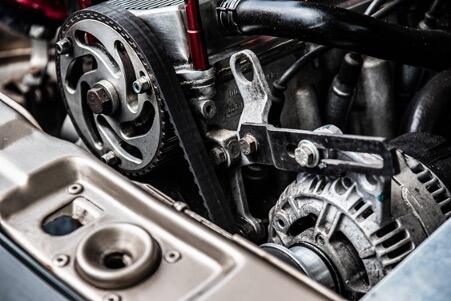
Have you ever considered how vital timing belts are to your engine's performance? These seemingly simple components play a crucial role in synchronizing the engine's internal parts, ensuring that everything runs smoothly. In this blog, we will explore the importance of timing belts, the consequences of neglecting their maintenance, and provide a detailed step-by-step guide on how to replace them using our specialized tools.
[Table of Contents]
- Understanding Timing Belts
- Why Timing Belt Maintenance Is Essential
- Tools Needed for Timing Belt Replacement
- Step-by-Step Guide to Replacing a Timing Belt
- Common Issues and Solutions
- Conclusion
Understanding Timing Belts
Timing belts are rubber belts with teeth that connect the crankshaft to the camshaft in an internal combustion engine. They ensure that the engine's valves open and close at the correct times during each cylinder's intake and exhaust strokes.
Key Functions of Timing Belts
- Synchronization: Timing belts synchronize the rotation of the crankshaft and camshaft, which is crucial for optimal engine performance.
- Preventing Engine Damage: A properly functioning timing belt prevents catastrophic engine failure by ensuring that moving parts do not collide.
Why Timing Belt Maintenance Is Essential
Neglecting timing belt maintenance can lead to severe consequences:
Potential Engine Damage
If a timing belt fails, it can cause the engine's pistons to collide with the valves, leading to significant damage that can be costly to repair.
Performance Issues
A worn or damaged timing belt can result in poor engine performance, reduced fuel efficiency, and increased emissions.
Recommended Replacement Interval
Most manufacturers recommend replacing timing belts every 60,000 to 100,000 miles, but it's essential to consult your vehicle's manual for specific guidelines.
Tools Needed for Timing Belt Replacement
To replace a timing belt effectively, you will need several specialized tools:
- Timing Belt Tool Kit: This often includes tensioners and alignment tools specific to your vehicle model.
- Socket Set: For removing bolts and securing components.
- Torque Wrench: To ensure bolts are tightened to manufacturer specifications.
- Pliers and Screwdrivers: For various tasks throughout the replacement process.
- Engine Support Bar: If necessary, to support the engine during removal.
Step-by-Step Guide to Replacing a Timing Belt
Follow these steps for a successful timing belt replacement:
-
Preparation:
- Ensure the vehicle is parked on a level surface and powered off.
- Disconnect the battery to prevent electrical issues.
-
Remove Engine Covers:
- Carefully remove any plastic or metal covers obstructing access to the timing belt.
-
Align the Engine:
- Rotate the crankshaft to align it with the timing marks on both the crankshaft and camshaft pulleys.
-
Remove Old Timing Belt:
- Loosen and remove any tensioners or pulleys securing the old timing belt.
- Carefully slide off the old belt from the pulleys.
-
Inspect Components:
- Check all related components such as pulleys, tensioners, and water pumps for wear or damage. Replace as necessary.
-
Install New Timing Belt:
- Place the new timing belt onto the pulleys, ensuring it is aligned correctly with all timing marks.
- Reinstall any tensioners or pulleys, making sure they are secured properly.
-
Double-Check Alignment:
- Rotate the crankshaft manually two full revolutions and recheck all alignment marks to ensure everything is in place.
-
Reassemble Engine Covers:
- Once everything is confirmed aligned, reattach any covers removed during disassembly.
-
Reconnect Battery and Test:
- Reconnect the battery and start the engine. Listen for any unusual noises and check for leaks.
Common Issues and Solutions
During timing belt replacement, you may encounter some common challenges:
-
Misalignment of Timing Marks:
- If you notice misalignment after installation, turn the crankshaft back to TDC (top dead center) and recheck all marks before tightening everything down.
-
Tensioner Issues:
- If the tensioner does not hold properly after installation, it may need replacement or adjustment according to manufacturer specifications.
Conclusion
Timing belts are crucial for maintaining your engine's performance and preventing costly damage. By following this step-by-step guide using our specialized tools, you can ensure a successful replacement that keeps your vehicle running smoothly. Regular maintenance of your timing belt is essential for long-term reliability—don’t wait until it’s too late!
FAQ Section
-
Q: How often should I replace my timing belt?
A: Typically every 60,000 to 100,000 miles, but consult your vehicle's manual for specific recommendations.
-
Q: Do all engines use timing belts?
-
Q: What are the environmental benefits of proper timing belt maintenance?

